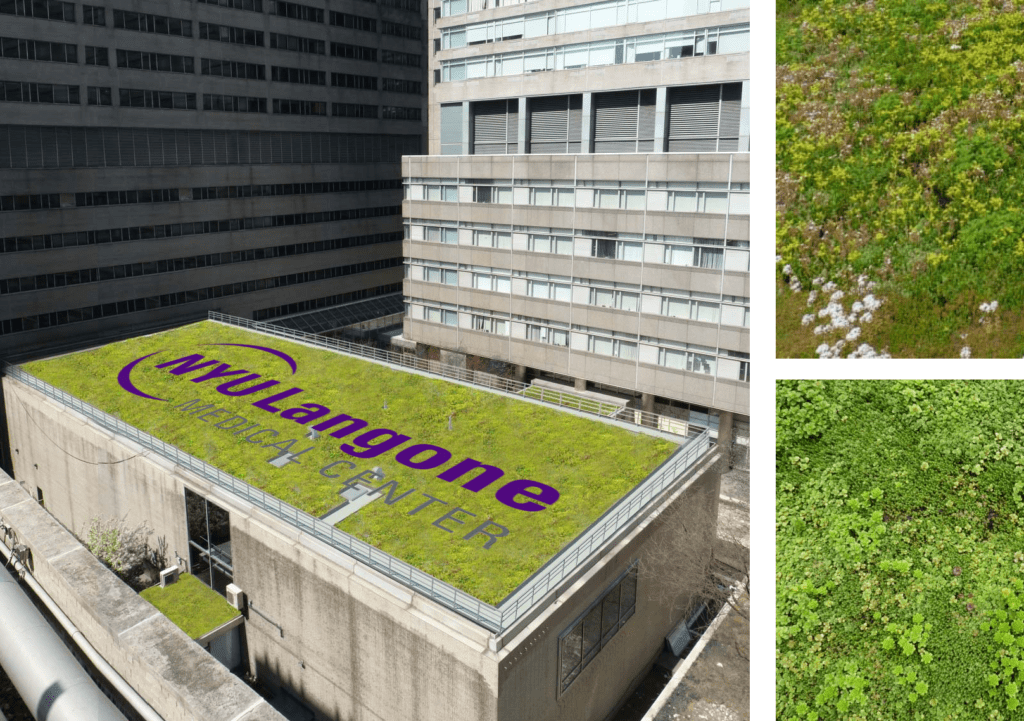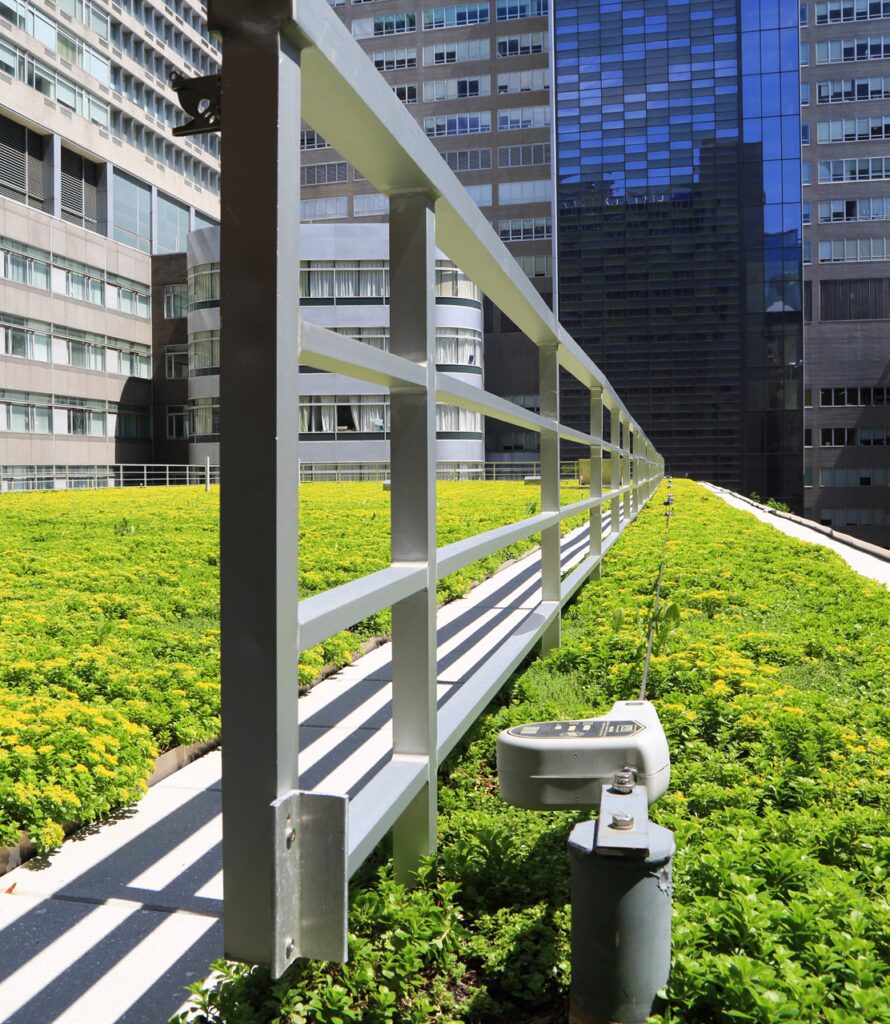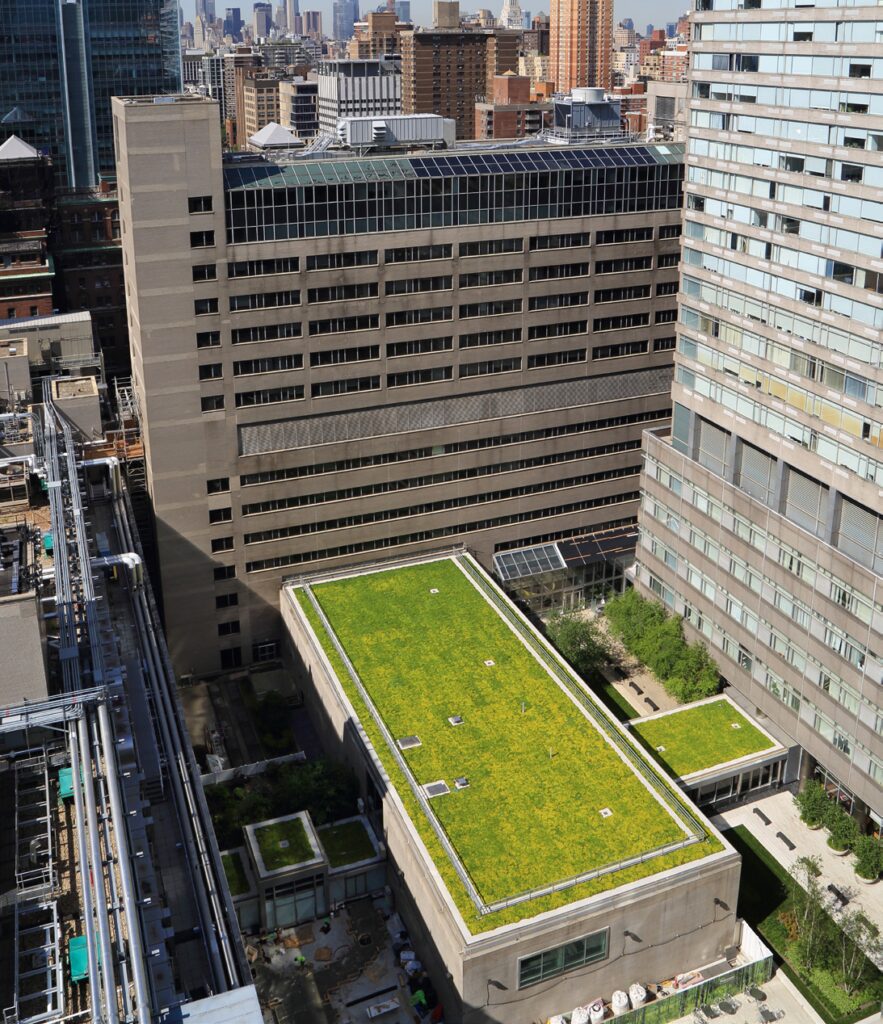Green Roofs for a Healthy City
April 2, 2021

The term “green roof” refers to a building roof that is partially covered with vegetation and a growing medium, planted over a waterproofing membrane. Also referred to as vegetative roofs, these roofs often include additional layers such as a retention layer, root barrier, and irrigation system.
While studies have shown that human stress levels decrease when they have views of nature and vegetation, it is important to understand that green roofs are much more than simply pleasant landscaping. Green roofs effectively utilize the natural functions of plants and soil to detain water that would otherwise strain the city’s sewer systems, while simultaneously acting as a natural filter for air and rainwater in urban landscapes. The many specific benefits of green roofs include alleviating floods, mitigating combined sewer overflows, improving air quality, reducing urban noise levels, and creating a habitat for wildlife.
Studies have also shown that a green roof’s vegetation decreases the surface temperature of roofs and shields waterproofing membranes from direct solar exposure. As a result, the urban heat island effect is diminished, buildings’ energy demands may be decreased, and the lifespan of roof waterproofing may be prolonged. With these benefits, it is easy to understand the excitement around green roofs!

As New York City looks to increase its resilience and battle climate change, recent requirements and incentives have been created to proliferate green roofs throughout the city. Local Law 92/94, passed in 2019, requires all new buildings – or existing buildings undergoing structural roof replacement – to install a green roof or solar power system over 100% of the new roof area. As an incentive to retrofit existing buildings with green roofs, the NYC Department of Environmental Protection (DEP) offers a grant program for private property owners. If the project is selected, the DEP will provide funds for the design and construction of the green roof, adjusting the funding amount based on the amount of water a roof can store during a rainstorm.
Often, an existing building’s roof structure is capable of supporting a green roof without modifications. Nevertheless, you must hire a Professional Engineer or Registered Architect such as HLZAE to perform a structural analysis and confirm this.

In creating a green roof for NYU Langone Medical Center’s Alumni Hall, HLZAE completely covered the existing roof with vegetation and a growing medium, planted over a waterproofing membrane. Additional layers include a root barrier and drainage and irrigation system. Alumni Hall’s green roof retains over 7000 gallons of storm-water. It also resolves chronic leaks in the auditorium spaces below and provides a pleasing garden for patients to look out onto.
HLZAE provides expertise in any stage of your project, from design until execution. If you are considering adding a green roof to your building, let us help you!
Recommended Articles
Sorry, we couldn't find any posts. Please try a different search.